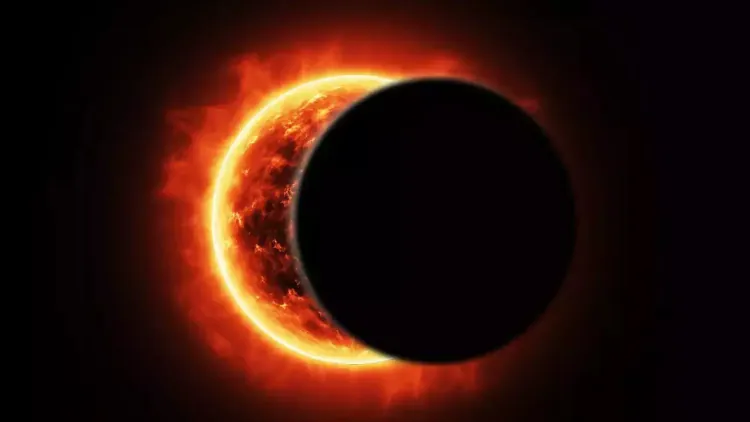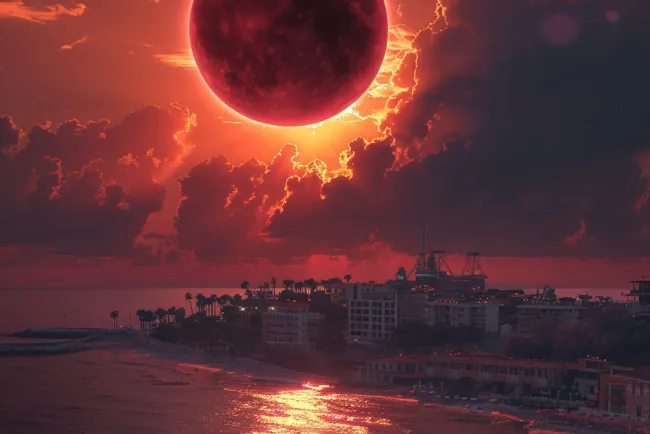Solar Eclipse 2024 U.S. Viewing Guide Maps & Times
The best U.S. locations for the 2024 Solar Eclipse, including maps, totality path, and peak viewing times

Introduction
The 2024 Solar Eclipse presents a spectacular celestial event as it carves its path across North America on April 8. This guide offers an in-depth look at the totality path, peak viewing times, and how to experience the eclipse across various U.S. locations. Whether you're within the path of totality or situated nearby, prepare for an awe-inspiring phenomenon.
Outline
- Overview of the 2024 Solar Eclipse
- Date and significance
- Geographic path
- Path of Totality: States and Cities
- Detailed map insights
- Major cities within the totality path
- Viewing Times and Duration
- Start times in key locations
- Duration of totality
- Preparing for Eclipse Viewing
- Safety tips
- Best practices for a memorable experience
- Eclipse Resources and Further Reading
- Online tools and apps
- Educational resources
Overview of the 2024 Solar Eclipse
On April 8, 2024, a total solar eclipse will grace the skies of North America, marking a significant event for astronomy enthusiasts and the general public alike. The eclipse will commence along Mexico's Pacific Coast at approximately 11:07 a.m. PDT, traversing through the U.S. from Texas to Maine, and concluding its journey in Canada. This celestial spectacle offers a unique opportunity for millions to witness the moon completely obscuring the sun.
Path of Totality: States and Cities
The eclipse's path of totality, where the moon fully blocks the sun, stretches across 15 U.S. states, encompassing a diverse range of landscapes and urban areas. Key states on the eclipse's route include Texas, Oklahoma, Arkansas, and others, extending all the way to Maine. Cities like San Antonio, Dallas, Little Rock, and Indianapolis fall within or near this path, promising optimal viewing conditions for those within the zone of totality.
Viewing Times and Duration
The total eclipse will span from approximately 11:07 a.m. PDT, with its first landfall in Mexico, to 5:16 p.m. NDT in Newfoundland, Canada. Specific cities along the path, such as Eagle Pass, Texas, and Cleveland, Ohio, will experience the eclipse at different times, with the duration of totality varying by location. For precise viewing times in your area, NASA's eclipse maps offer detailed insights based on ZIP codes.
Preparing for Eclipse Viewing
To ensure a safe and enjoyable eclipse experience, it's crucial to prepare adequately. This includes using certified eclipse glasses for direct sun viewing, planning your viewing location in advance, and considering local weather forecasts. Additionally, engaging with community events or educational programs can enhance your understanding and appreciation of the eclipse.
Eclipse Resources and Further Reading
For those seeking to deepen their knowledge or find the best viewing spots, a variety of resources are available. NASA's website, alongside specialized apps and tools, provides comprehensive maps and interactive guides. Moreover, educational materials and articles can offer insights into the science behind solar eclipses and their historical significance.
FAQs
Q: Can I view the eclipse without special equipment?
A: Viewing the solar eclipse directly without certified protection can cause serious eye damage. Use eclipse glasses or indirect viewing methods.
Q: Where is the best place to view the 2024 Solar Eclipse?
A: The best viewing locations are within the path of totality, where the eclipse will be total. Cities like Dallas, Texas, and Cleveland, Ohio, are among the prime spots.
Q: How long will the total eclipse last?
A: The duration of totality varies by location but can last up to four minutes and 28 seconds in certain areas.
For more detailed information and to plan your eclipse experience, visit our dedicated solar eclipse section here.
Embark on a celestial journey as the 2024 Solar Eclipse crosses North America. Whether you're within the path of totality or observing from afar, this guide aims to enhance your viewing experience, ensuring a memorable encounter with one of nature's most awe-inspiring events.
What's Your Reaction?






















